In Ellington Show, Students Respond to Art With Art
By • November 18, 2019 0 2290
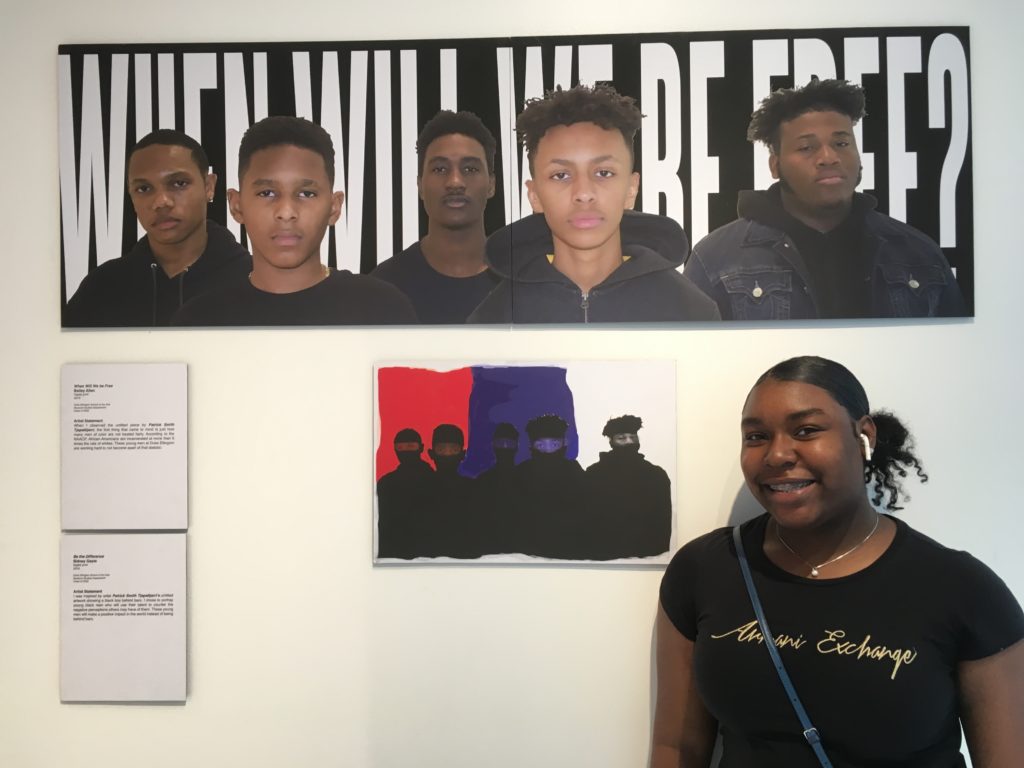
When she died in February of 2018, Peggy Cooper Cafritz, co-founder and dedicated supporter of the Duke Ellington School of the Arts, left some of her collection of contemporary art to the dual-curriculum public high school. On Nov. 7, an opening reception was held for the exhibition “In My Shoes: The Peggy Cooper Cafritz Collection @Ellington.”
“In My Shoes” brings together a dozen works from the Peggy Cooper Cafritz Collection with a dozen works by students in Ellington’s Museum Studies Department.
Most of the students majoring in Museum Studies are artists, according to Marta Reid Stewart, who chairs the department. On top of their behind-the-scenes experience of the museum field, the department aims to “sprinkle this need and desire to create,” she said. The students have several opportunities to show their own work every year.
Natural light comes through the arched windows of the school’s historic façade, behind which the “In My Shoes” exhibition is hung, on white walls and partitions in the former entrance foyer. Each of the pieces from the collection is paired with one or two student works created in response.
From the Peggy Cooper Cafritz Collection, Jacqueline Maggi’s “Furlough” is a birdhouse-like sculpture, given to Cooper Cafritz after hundreds of works she owned were destroyed in a house fire while she was away. Student Laura Jablow responded to the piece with an ink and digital print “From the House.” Fellow student Kai Isaac created “Down” in pen and watercolor.
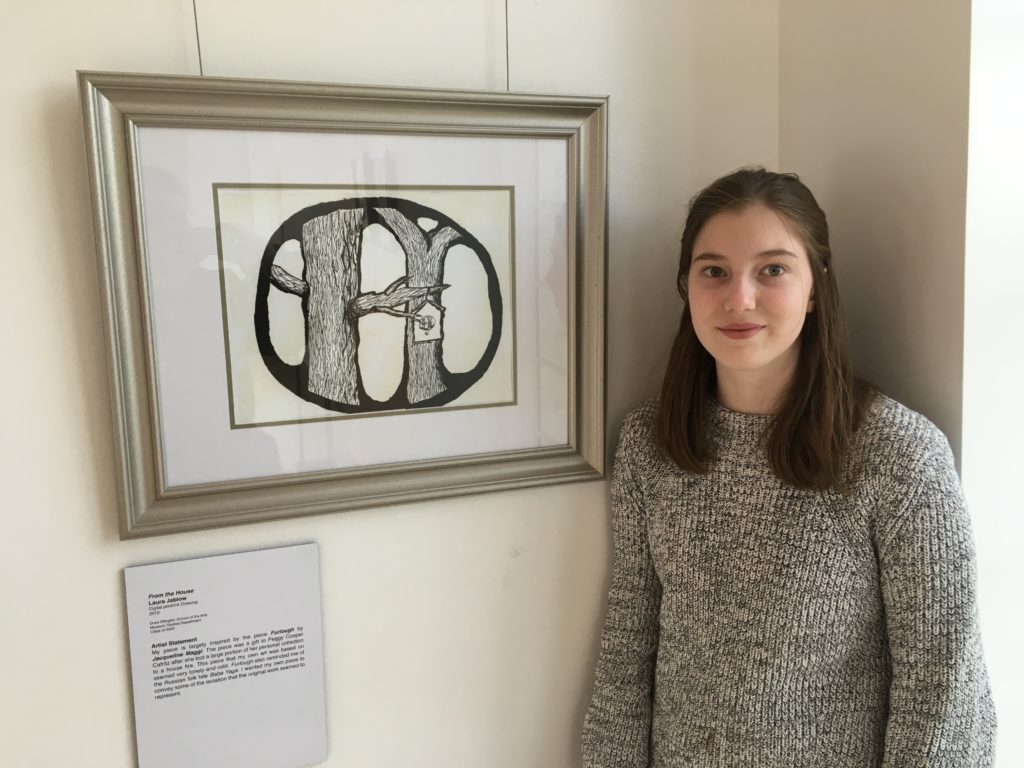
Laura Jablow with “From the House.” Photo by Richard Selden.
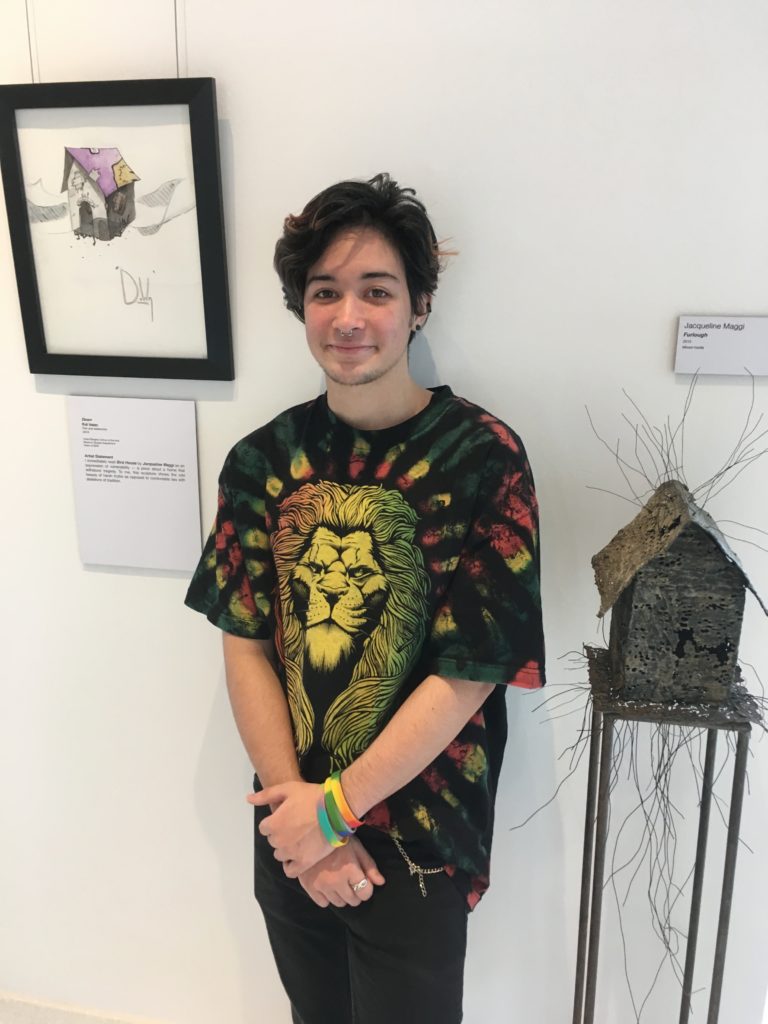
Kai Isaac with “Down.” Jacqueline Maggi’s “Furlough” is at right. Photo by Richard Selden.
With Ava DuVernay’s documentary “13th,” about the 13th Amendment, in mind, students Ayonlah Carter and Jonathan Fuentes-Pastora teamed up to respond to Jonathan Seliger’s “X,” a tote bag-shaped piece decorated like a green, black and orange flag. Their installation — including a bag with a black-and-white, burnt-edged flag, play money, photos of students and quotes from DuVernay — references prison labor as “another form of slavery,” according to Carter, wanting to show people what is going on “in your country, right now.”
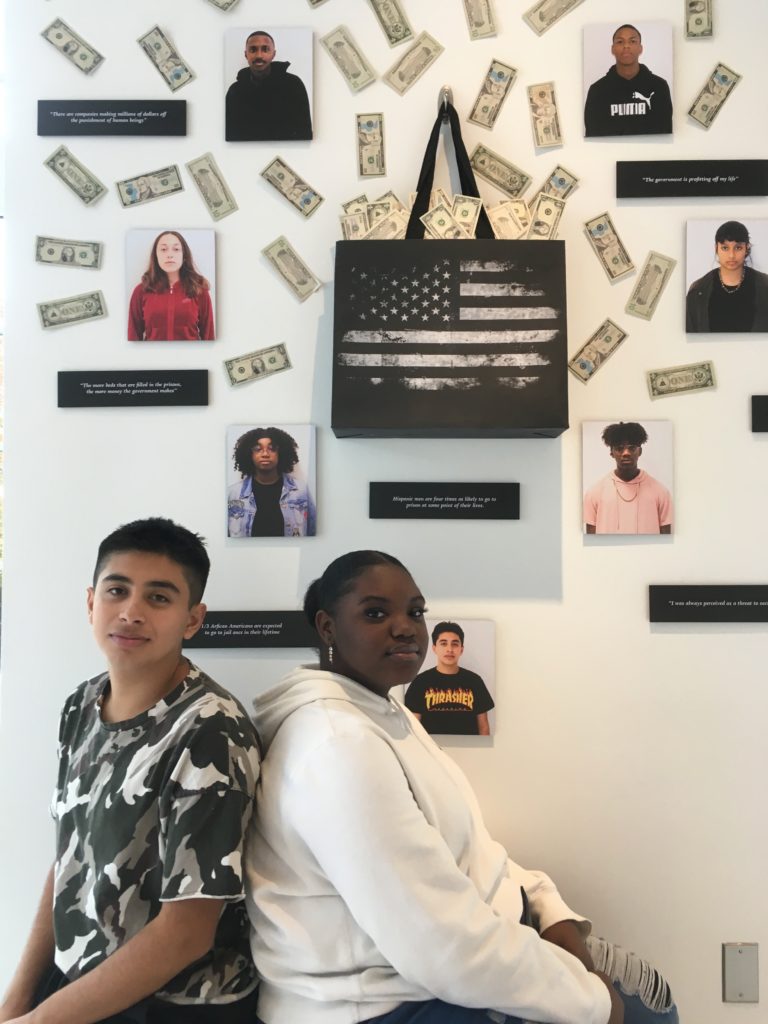
Jonathan Fuentes-Pastora and Ayonlah Carter with “13th.” Photo by Richard Selden.
“Who Are You?” by Jada Williams is a response to Margaret Bowland’s painting “Flower Girl 4,” which shows a young black girl with white paint on her face. Williams sought “to show that black girls could be comfortable in their own skin.”
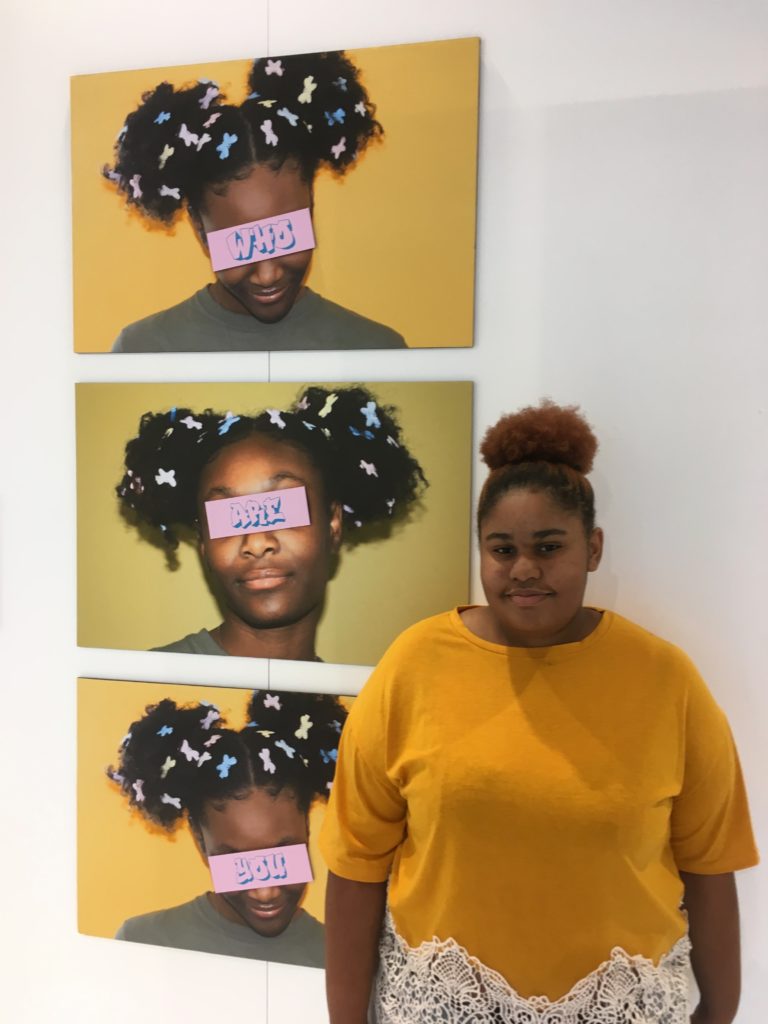
Jada Williams with “Who Are You?” Photo by Richard Selden.
Ja’Nai Redd’s “Mechanic” and Brandon Marshall’s “The Man in the Orange Coat” respond with photographs of working people to Jas Knight’s “Autumn,” a painting of a woman making a bed.
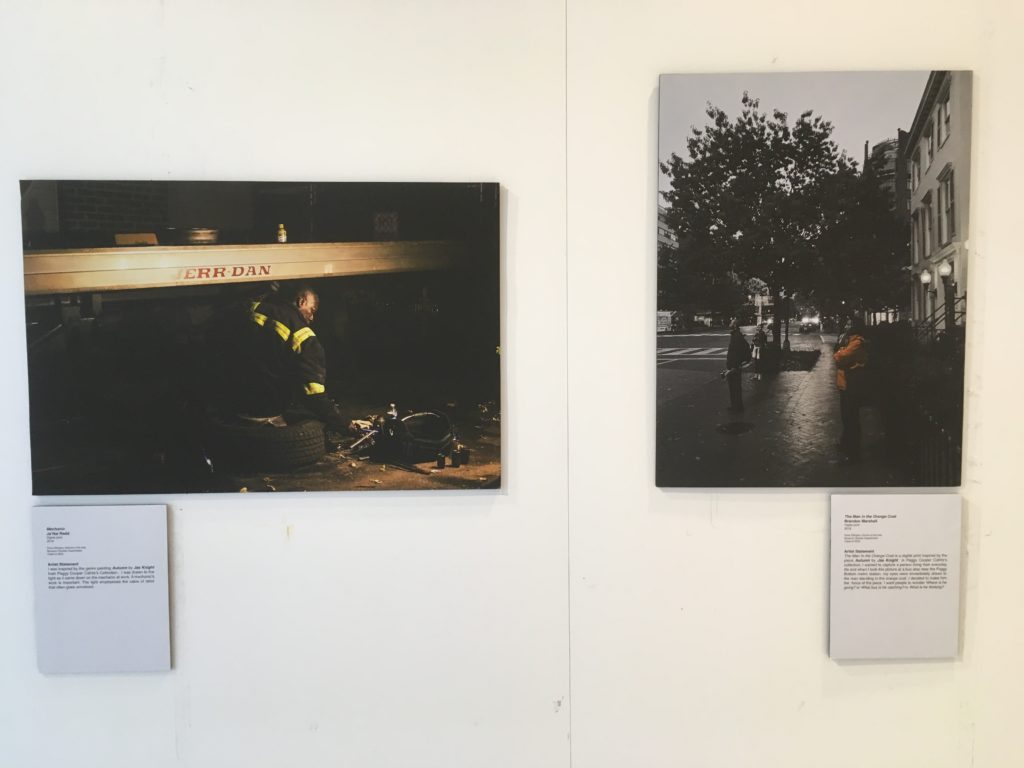
Ja’Nai Redd’s “Mechanic” and Brandon Marshall’s “The Man in the Orange Coat.” Photo by Richard Selden.
A two-panel abstract painting, “I’m Not Hungry/Feast” by Arundhati Eidinger came about because the student “saw a beast” in Mark Thomas Gibson’s “Hungry Again.”
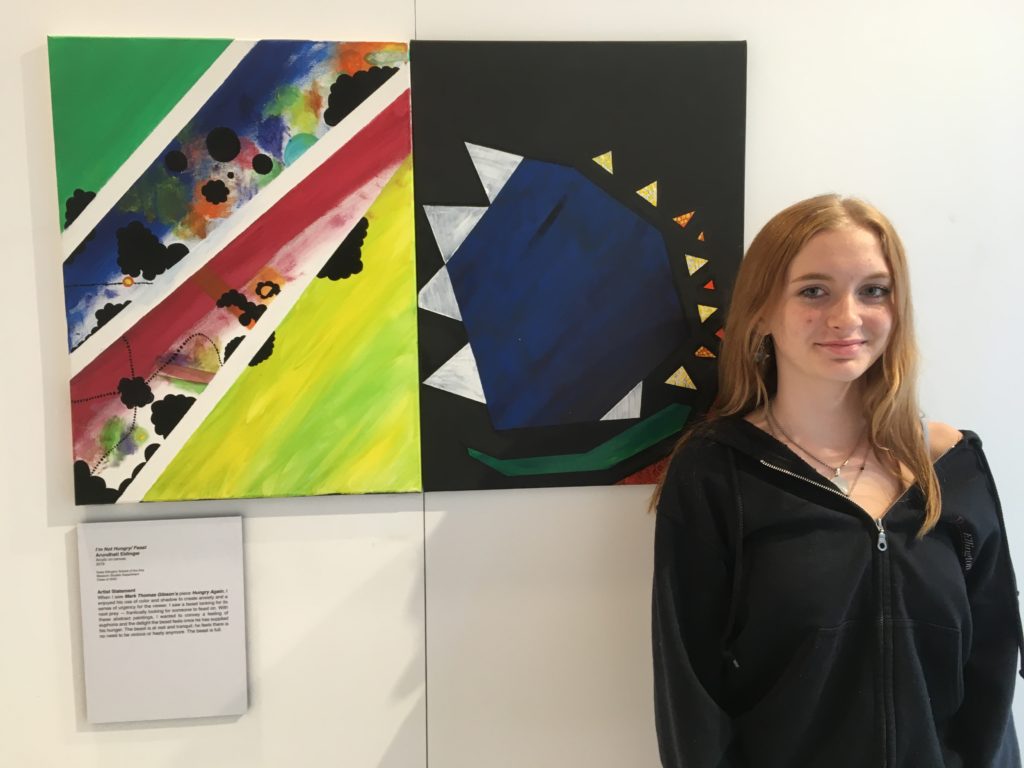
Arundhati Eidinger with “I’m Not Hungry/Feast.” Photo by Richard Selden.
Bailey Allen’s “When Will We Be Free?” shows five male students in front of large letters, reminiscent of jail bars, spelling out the title. It is a response to Patrick Smith Tjapaltijarri’s “Untitled,” as is Sidney Gayle’s “Be the Difference.”
“In My Shoes” is on view at the school, 3500 R St. NW, on weekdays from 9 a.m. to 5 p.m. through Dec. 14. A $20 donation is suggested.

